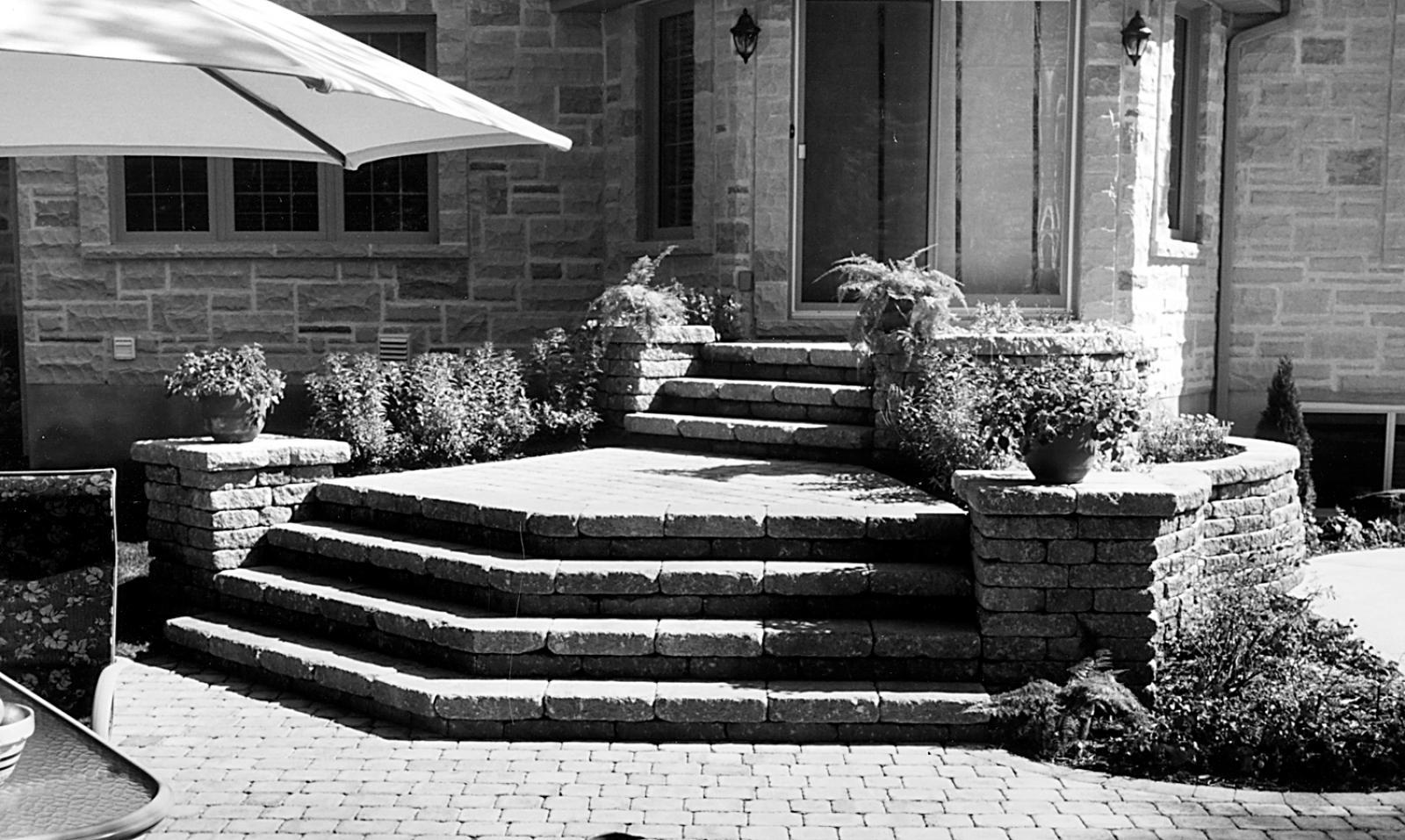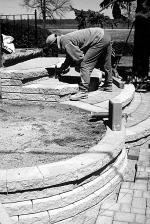July 26, 2013

Interlocking pavers make a grand entrance
By Brian Burton
 Many landscape contractors, utilizing the versatility of concrete pavers to enhance the natural surroundings and the existing buildings, are creating original and innovative entrance treatments.
Many landscape contractors, utilizing the versatility of concrete pavers to enhance the natural surroundings and the existing buildings, are creating original and innovative entrance treatments.
In the past, hardscapes were traditionally utilitarian, a place to park the car or a pathway leading to the door, bringing a sense of order to the site. In today's world, however, the attributes and details of exterior landscape areas are often just as important as the interior spaces.
Hardscaping enhances status and value
When a hardscaping contractor considers the key elements required to create an attractive and functional hardscaping design, the "big picture" should be taken into account, since more and more homeowners view their backyards and landscaping as an extension of the home. In today's world, with so many houses looking virtually identical, the backyard and exterior areas often represent the unique signature and personal statement of the homeowner. Hardscaping design and the selection of materials used in landscaping construction not only reflect the owner's personal style, they also serve to enhance both the real and perceived status of the home.
Some essential design elements
Focal points:
In almost every case, the main entrance of the residence will be the primary focal point. The treatment of this area often sets the tone for the entire landscaping design. Occasionally residential properties, along lakefronts or scenic locations, will be orientated towards the rear or side entrance and will require a different approach. In other instances, the property owner may indicate otherwise for reasons of privacy or security.
Vantage point:
When developing a design approach, the hardscaping contractor should always consider the vantage point. As a rule of thumb, imagine yourself an invited guest arriving at the home for the first time. Bear this in mind when arriving at the residence; paving installations, when properly designed, should "welcome the way."
Scale and functionality:
Effective hardscaping works most effectively when coordinated with the scale and function of the property. This can mean emphasizing certain attributes or spaces that make the property stand out from its neighbours, or on the other hand, it may serve to detract attention from less desirable features.
The movement of vehicular and pedestrian traffic should be a primary consideration in paving installations. If the property is located on a busy street, for example, the addition of a turnaround space is highly recommended. Factors such as drainage, geotechnical and structural details must also be considered.
Theme:
An essential element of professional design is the development of a landscaping theme. Wherever practical, landscaping should echo or reinforce the architectural style of the property so as to complement existing stylistic features when contemplating such elements as pavements and retaining walls.
Colour:
Colour plays an extremely important role, and care should be taken to ensure that the dominant colours displayed in the facade (and plants surrounding the home) are coordinated effectively with the hardscaping. It is also important that the colours chosen for hardscaping do not "overpower" the landscaping installation.
Texture:
Minor differences in texture are usually magnified in landscaping and hardscaping. For this reason, there are occasions when you may want to consider a "mockup" to determine the effectiveness of textures and colours.
Light and shadow:
These components of landscaping literally change with the time of day and the season. This is one area where careful inspection of the property at different times of the day can assist in the design process.
Safety:
Although safety factors may not be a concern on every site, there are occasions when rapid changes in grade or water features such as pools and ponds, should be considered during the design stage. In many cases, there are more attractive alternatives to fencing or barriers that can be effectively incorporated into landscape designs.
| Tips from the pros ... When developing and preparing quotations and proposals keep the following tips in mind:
|
 |
For more information regarding interlocking pavements contact the Interlocking Concrete Pavement Institute at P.O.Box 23053, 55 Ontario St., Milton, ON L9T 2M0
About the author: Brian Burton is a frequent contributor to Landscape Trades.